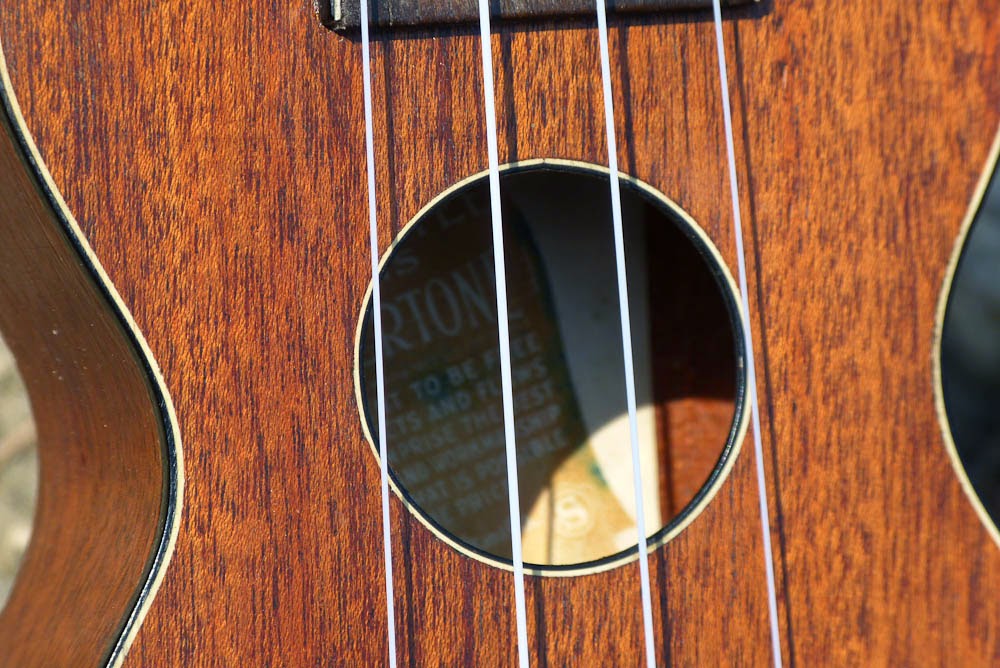c.1920 Harmony-made Supertone Extra-board Mahogany Soprano Ukulele
Just like the Harmony-made uke I finished yesterday, this is that company's sort of trademark "peanut" shape from the late teens through the late 20s. By the 1930s the shape had changed to reflect a more Martin-y or Gretsch-y look but this is their original-style, smaller-width and cuter variety. It's all solid mahogany with a dyed-maple fretboard and nice long fretboard extension which gives it a "dressy" look.
It plays spot-on with hair-above 1/16" action height at the 12th fret and it has that signature mellow but snappy Harmony tone. I like these a lot for sweet fingerpicking.
This was probably a fancier model sold through the Sears catalog
(Supertone = Sears branding) and dates around 1920 or so. To befit its
more upscale appointments (celluloid binding and separate, long
fretboard vs. fretting directly on the neck like a Hawaiian) it also has
a dovetailed neck joint rather than a doweled joint. This is inherently
more stable and I've also shimmed it up during repairs to the fretboard
extension to make sure it stays that way.
It's a pretty little uke and crack free except for a couple hairlines near the neck pocket area on the sides (stress cracks from the neck joint getting a whack) though I've glued them up. Other work included recutting and regluing the bridge, regluing the fretboard extension (it had chipped out and come up at the joint), a fret level/dress, cleaning, and setup.
Interestingly, the headstock has a mahogany veneer over a mahogany neck. I added extra washers to each tuner on the underside to get them to turn smoothly after tightening/loosening adjustments. Rosewood nut.
Pearl dots, dyed maple board. The board is also bound in 2-ply celluloid.
The string spacing is a little wider than normal for a Harmony from this time and probably reflects its fancier pedigree. It has a 1 3/8" wide nut and the string spacing at the bridge is 1 7/8" which gives you plenty of room for picking and chording.
The headstock has some funny "bite marks" which probably aren't bites but perhaps someone was clipping something to the top of it...?
If you look closely you can see the stress-hairline formed on the sides near the neck pocket. I've glued both of these small hairlines all up (there's another 1" one on the other side). They're the only cracks extant.
















Comments